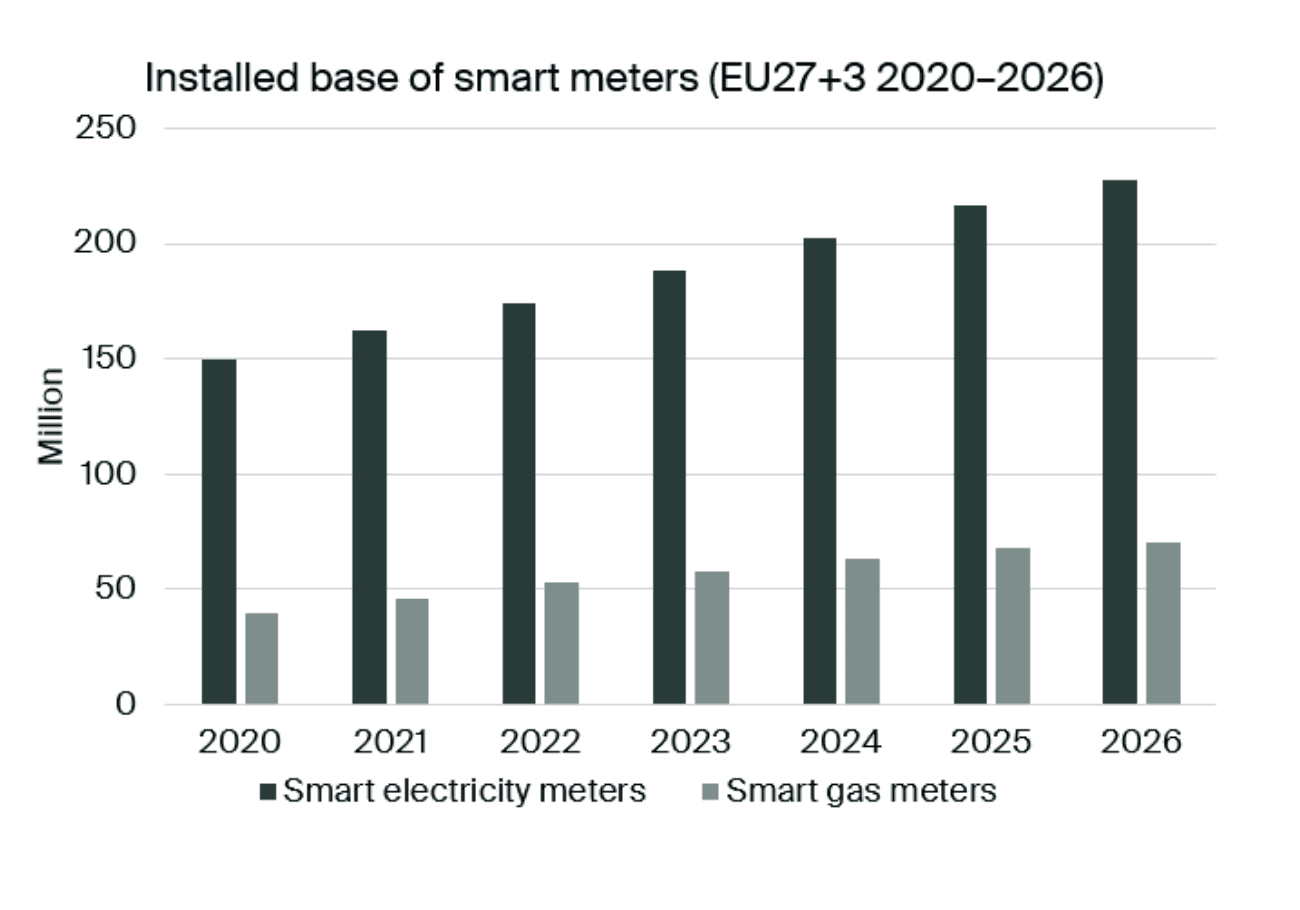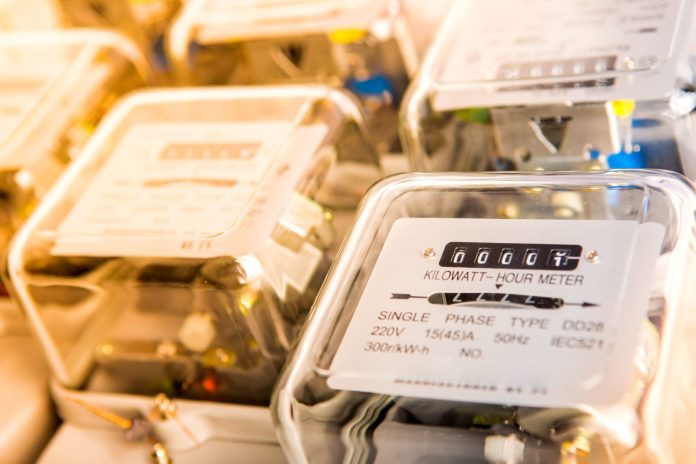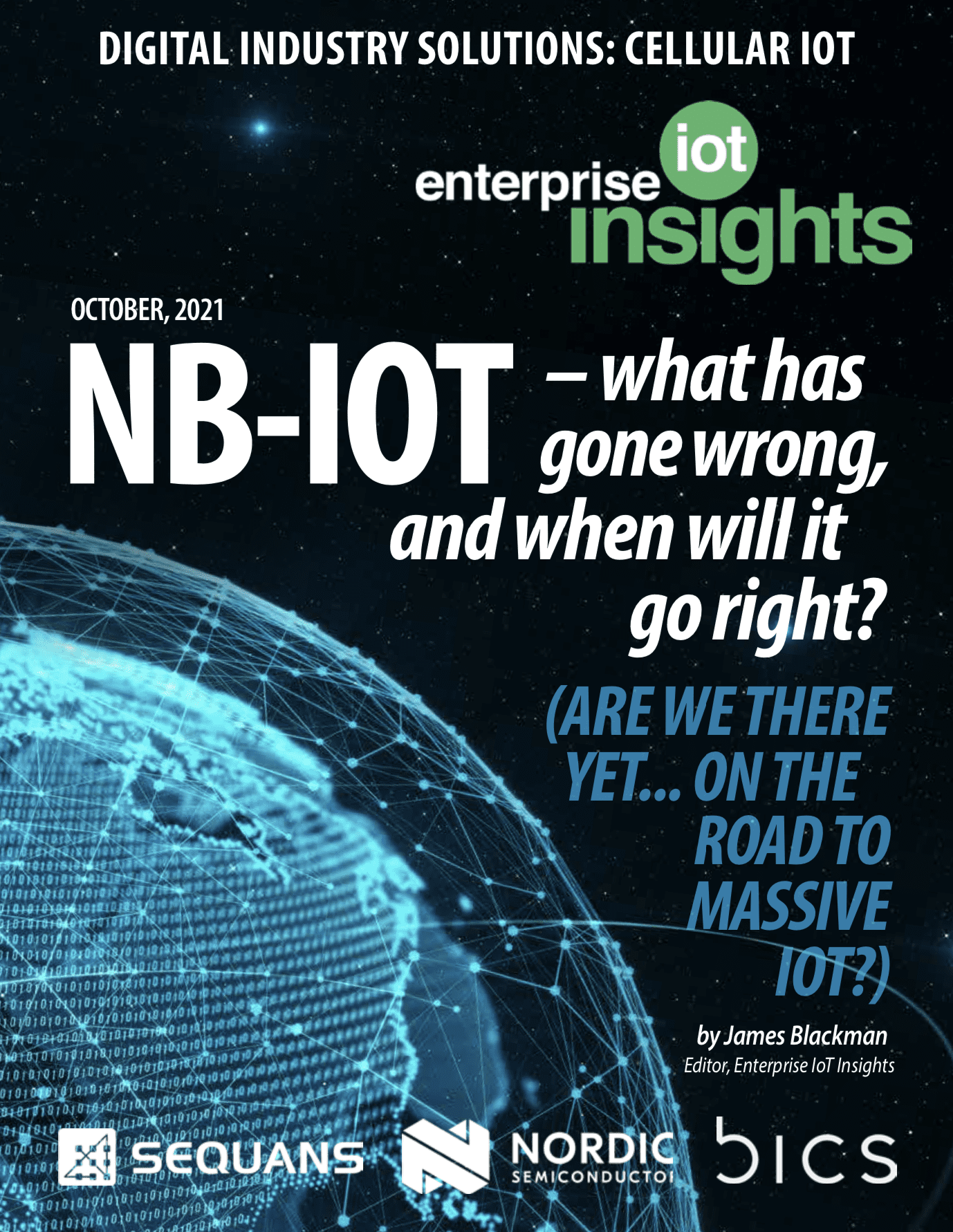Note, this article has been updated from the 27/10/21 version, which suggested 57% of electric meters in Europe will be connected to NB-IoT and LTE-M. This is wrong, the stated figure of 57% refers to electric meters connected via all wireless technologies.
Wireless technologies of various sorts will be used to connect well over half (57 percent) of smart electric meters in 2026, says IoT analyst company Berg Insight, up from a quarter (25 percent) in 2020. Much of the growth, it said, will be driven by the emergence of NB-IoT and LTE-M as suitable candidate technologies for a second generation of smart electric meters.
These twin cellular IoT technologies have had their commercial breakthrough in the European metering market, said Berg Insight. More than half of all electricity meters in Europe are now classified as ‘smart’, and NB-IoT and LTE-M will drive a deal of the continuing growth, it implied.
Berg Insight said the half-way mark for ‘smart’ electric meters was close at the end of 2020, at about 49 percent penetration, when nearly 150 million smart electricity meters had been installed in European homes; but compound annual growth (CAGR) of 7.2 percent per year through 2026 means the half-way point has now been passed, it said.
Berg Insight calculates the installed base of smart electricity meters will reach 227 million units in 2026. Meanwhile, the European smart gas metering market will increase its installed base of devices from 39 million units in 2020 to just over 70 million in 2026, representing growth of around 80 percent in the period. It had no figures for the share of smart gas meters connected by NB-IoT or LTE-M, either.

But it said the commercial rise of NB-IoT and LTE-M coincides with rollout of a second generation of smart electric meters in the utility market. Levi Ostling, senior analyst at Berg Insight, commented: “Replacements of first-generation smart metering equipment are expected to account for nearly a third of the cumulative device shipments until 2026.”
Berg Insight said the growth in popularity of cellular in the utility market is attributable to the emergence of 3GPP-based low-power wide-area (LPWA) connectivity services, which have become available in most European markets in the past couple of years. Ostling said: “NB-IoT and LTE-M have now had their commercial breakthrough in the European metering market and are being considered for a rapidly growing number of projects.”
He said: “The composition of annual smart electricity shipment volumes is expected to change significantly over the coming years as rollouts in many markets in Western and Northern Europe are now either well-advanced or largely completed. One major growth area that will spread across Europe in the coming years is second-generation smart metering deployments.”
Check out the new editorial report on NB-IoT from Enterprise IoT Insights, available to download here; a webinar on the same subject is available here.


